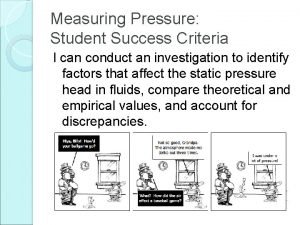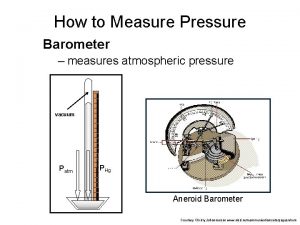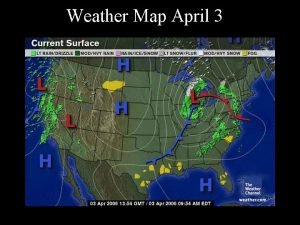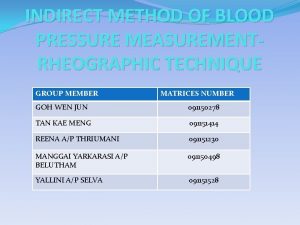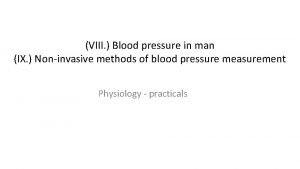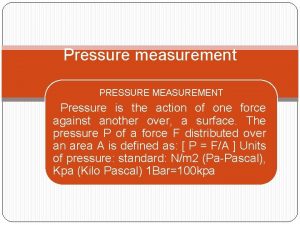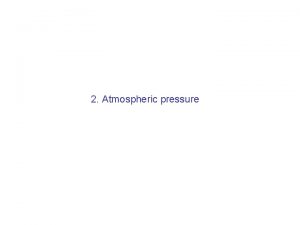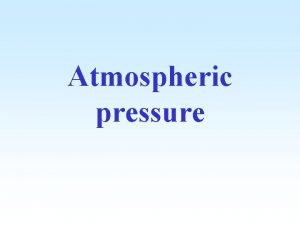CHAPTER 2 ATMOSPHERIC PRESSURE Measurement of atmospheric pressure








- Slides: 8

CHAPTER 2. ATMOSPHERIC PRESSURE Measurement of atmospheric pressure with the mercury barometer: vacuum h A B

“SEA LEVEL” PRESSURE MAP (9/23/08, 15 Z)

SEA-LEVEL PRESSURE CAN’T VARY OVER MORE THAN A NARROW RANGE: 1013 ± 50 h. Pa Consider a pressure gradient at sea level operating on an elementary air parcel dxdydz: P(x) P(x+dx) Pressure-gradient force Vertical area dydz Acceleration For DP = 10 h. Pa over Dx = 100 km, g ~ 10 -2 m s-2 a 100 km/hr wind in 1 h! Effect of wind is to transport air to area of lower pressure a dampen DP On mountains, however, the surface pressure is lower, so the pressure-gradient force along the Earth surface is balanced by gravity: P(z+Dz) P-gradient gravity P(z) a. This is why weather maps show “sea level” isobars; a The fictitious “sea-level” pressure at a mountainous site assumes an air column to be present between the surface and sea level

MASS ma OF THE ATMOSPHERE Radius of Earth: 6378 km Mean pressure at Earth's surface: 984 h. Pa Total number of moles of air in atmosphere: Mol. wt. of air: 29 g mole-1 =. 029 kg mole-1

Barometric law (variation of pressure with altitude) • Consider elementary slab of atmosphere: P(z+dz) P(z) unit area Ideal gas law: Assume T = constant, integrate: Barometric law hydrostatic equation

VERTICAL PROFILES OF PRESSURE AND TEMPERATURE Mean values for 30 o. N, March Stratopause Tropopause

Application of barometric law: the sea-breeze effect

SHORT QUESTIONS • Venus is slightly smaller than Earth (6, 100 km radius, vs. 6, 400 km for Earth), so it has less gravitational pull on its atmosphere. And yet the Venusian atmosphere is much thicker than that of Earth (surface pressure of 91 atm, vs. 1 atm for Earth). Isn’t this contradictory? 2. So why does it take longer to boil an egg in Denver than in Boston? 3. We derived the scale height of the atmosphere as H = RT/Mag, where Ma is the mean molecular weight of air. But since N 2 is lighter than O 2, shouldn’t it have a larger scale height, so that the oxygen mixing ratio would decrease with increasing altitude?

